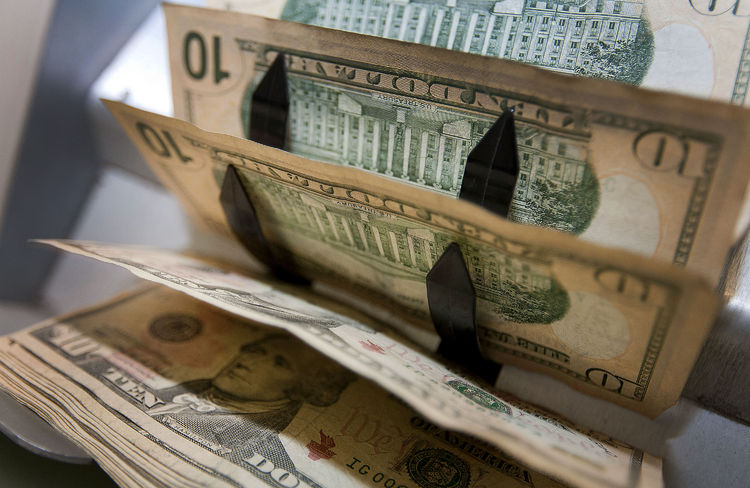- Dollar Falls Broadly on Trump’s Currency Comments
The dollar slumped against the yen and other major peers on Monday after U.S. President Donald Trump expressed discomfort with the greenback’s strength and global finance leaders ended a weekend meeting with little consensus on how to resolve multiple disputes over U.S. tariff actions.
The dollar extended losses after CNBC reported on Friday that Trump was worried the Federal Reserve will raise interest rates twice more this year. Trump said the Fed’s policy tightening and the strong dollar could hurt the U.S. economy.
The dollar index, a measure of its value against a basket of six major currencies, was down 0.2 percent at 94.251 on Monday, slipping further from a one-year high of 95.652 touched on July 19.
Against the yen, the dollar fell for the third day to a low of 110.85 yen, its weakest level since changing hands at 110.77 yen on July 11. It was last off about 0.4 percent at 111.06 yen.
The yen was also driven up after Reuters and other media reported that the Bank of Japan is actively discussing changes to its policies.
The BOJ is scheduled to hold its next monetary policy meeting on July 30 and 31.
Against the euro, the dollar slipped 0.2 percent to $1.1742.
At a weekend meeting in Buenos Aires, finance ministers and central bank governors from the world’s 20 largest economies called for stepped-up dialogue to prevent trade and geopolitical tensions from hurting growth.
The meeting came at a time of an escalating trade dispute between the United States and China, which have so far slapped tariffs on $34 billion worth of each other’s goods.
Trump raised the stakes on Friday with a threat to impose tariffs on all $500 billion of Chinese exports to the United States unless Beijing agrees to major structural changes to its technology transfer, industrial subsidy and joint venture policies.
Osamu Takashima, head of G10 FX strategy, Japan at Citigroup Global Markets Japan, said while Trump’s comments would be a negative for the dollar, a bigger concern for the market would be increased uncertainty.
“At the moment, we don’t know what kind of pressure or comments could come from the U.S. side,” said Takashima.
“At the same time, U.S. yields look like they are bottoming out. The reason why President Trump is becoming very nervous on the U.S. dollar is because the Fed, led by Chair (Jerome) Powell, is continuing policy firming. Under such circumstance, the fundamentals look rather positive for the U.S. dollar overall,” he said.
The Canadian dollar traded nearly flat against the U.S. dollar, changing hands at 1.3126 Canadian dollars.
It had rallied about 1.4 percent on Friday after strong retail sales and inflation data reinforced expectations for another interest rate hike by the Bank of Canada this year.

 Naira3 weeks ago
Naira3 weeks ago
 News4 weeks ago
News4 weeks ago
 Naira4 weeks ago
Naira4 weeks ago
 Naira3 weeks ago
Naira3 weeks ago
 Travel3 weeks ago
Travel3 weeks ago
 Jobs3 weeks ago
Jobs3 weeks ago
 Naira3 weeks ago
Naira3 weeks ago
 Investment4 weeks ago
Investment4 weeks ago






























